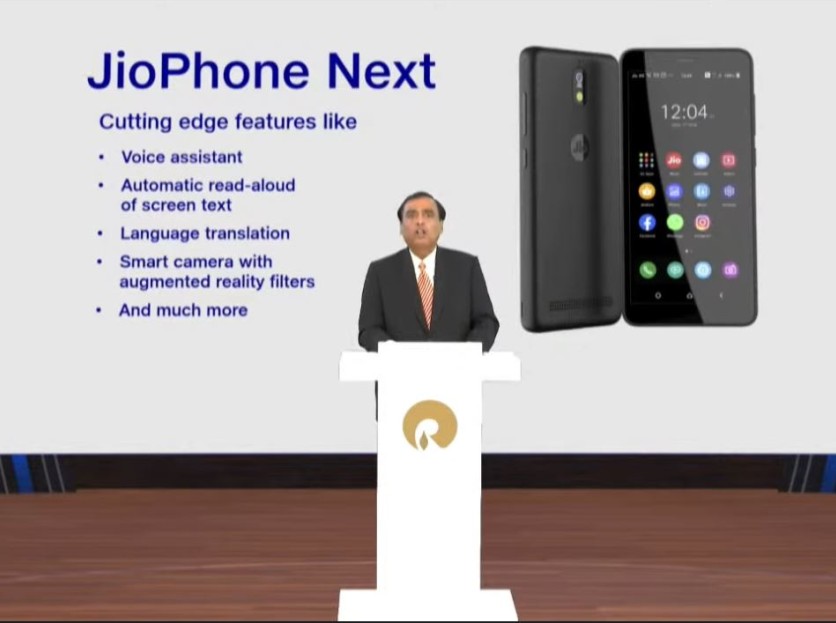Google failed with Android Go in India, but its partnership with Jio will finally allow it to target the masses.
Over four years ago, Google CEO Sundar Pichai said that smartphones need to cost as little as $30 to gain widespread adoption across India. Although the country is the second-largest smartphone market in the world — with over 700 million users — there's still a sizeable chunk of the Indian populace that hasn't made the switch.
Xiaomi and other Chinese manufacturers have significantly lowered the barrier to entry for smartphones, offering decent options for as low as ₹6,799 ($90), but that is still out of consideration for millions of Indians. Google tried to target the $50 to $75 segment with Android Go devices in the past, but those efforts have failed to gain momentum, much like its tryst with Android One.
But all that is changing thanks to Google's partnership with Jio in India. Jio announced the JioPhone Next, an entry-level phone that's running an "optimized" version of Android. Jio's earlier devices in this category featured KaiOS, so the fact that the JioPhone Next comes with Android out of the box and has full access to the Play Store and Play Services is a huge deal in and of itself.
Google didn't go into a lot of detail around the Android version powering the device, with Pichai noting that the company "optimized a version of our Android OS especially for this device." But what we do know is that the JioPhone Next will have access to Google Assistant, offer a camera with HDR and AR filters, real-time translation, and read-aloud feature that works with any on-screen text. The device will also include Jio's entire suite of digital services.
The JioPhone Next paves the way for millions of feature phone users to switch to a smartphone.
If I had to venture a guess, the JioPhone Next is running a custom version of Android Go that's optimized for the JioPhone Next's hardware. Jio hasn't shared hardware details of the phone just yet, but we should get a better understanding of what's under the hood once the device hits store shelves in September.
While we'll have to wait until then to find out what the JioPhone Next will cost, it is touted to be the world's most affordable Android phone, so it will significantly undercut what Xiaomi, Realme, and others offer in the entry-level segment. Combine that with the sheer scale of Jio, and the JioPhone Next may just turn out to be one of the best-selling phones in India this year.
Neil Shah, partner and vice president of research at Counterpoint Research, notes that the addition of voice-enabled features and affordable pricing could be the catalyst that makes JioPhone Next an enticing option to hundreds of millions of users still on feature phones:
The under-5K segment is severely underserved with lack of good devices and features to fill the digital divide and bring those 330 million odd feature phone users or the rest of potential more than half a billion segment not owning a phone to 4G smartphone world. Google has been unable to crack this segment even with lighter version of Android (Go or One) and several partnerships.
But with Jio's partnership and the approach of adding voice and visual UIs to interact will help bridge the digital divide which is either digital literacy or lack of understanding textual English UI. Jio will further look to sweeten the deal to offer the phone potentially at competitive price points, hopefully sub INR 3000 ($40) to attract hundreds of millions of 2G users to its 4G network and services ecosystem.
Jio is a carrier behemoth like no other — with 422 million subscribers, it is the dominant player in the country. It was the driving factor behind 4G gaining ground in India, essentially giving away hundreds of gigabytes of data for free. The introduction of Jio turned the cellular industry on its head, and is the primary reason why the country has one of the most affordable data plans in the world (I pay ₹2,498 ($34) a year for my cellular plan, and get 2GB of 4G data a day and unlimited calls).
It is this scale that Google will be keen to leverage with the partnership. The Android Go initiative failed in part because most of the devices were priced out of reach of potential customers, but that isn't an issue here. Jio can effectively sell the phone at manufacturing cost because it can then lock in customers to its 4G service, and Google stands to benefit because it gets hundreds of millions of Android users. And that makes the JioPhone Next a win-win for both Jio and Google.
from Android Central - Android Forums, News, Reviews, Help and Android Wallpapers https://ift.tt/2UUeBDb
via IFTTT



Aucun commentaire:
Enregistrer un commentaire